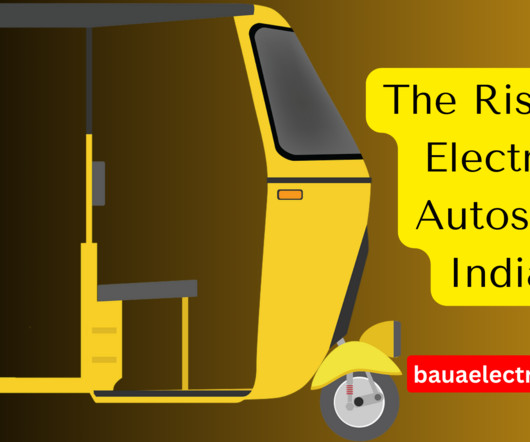Driving Towards a Sustainable Future: The Rise of Electric Autos in India
Baua Electric
FEBRUARY 7, 2024
As the second-most populous country in the world and one of the largest consumers of fossil fuels, India is making significant strides in adopting electric vehicles (EVs) as a solution to combat climate change and reduce air pollution. One of the main challenges is the high upfront cost of electric vehicles.















Let's personalize your content